PCB design
This service is provided in conjunction with
our partner Ultimate Technologies Incorporated.

Chip to Board Solution
Our partner has extensive experience in designing characteristic evaluation boards of high performance system LSI, and they are designing interposers for LSI packages at the same time. We think that overall optimization can be efficiently achieved by designing a PCB with the ability to review boards/packages/chips. We provide solutions (PCB design) to reduce the cost to mass-produce PCBs that draw out the ability of LSI and maximize system performance.
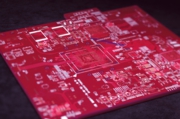
Automotive Electronics
The demand for environment, safety, and information technology in the automotive field is growing, and the integration between the high-speed interface technology that has been fostered in consumer products and the EMC/heat protection technology needed in automotive products is required. Along with SI, PI, EMC, and thermal fluid simulation services that have been provided mainly for consumer products, we enhance immunity and simulation services and contribute to the efficiency of PCB design for automobiles.
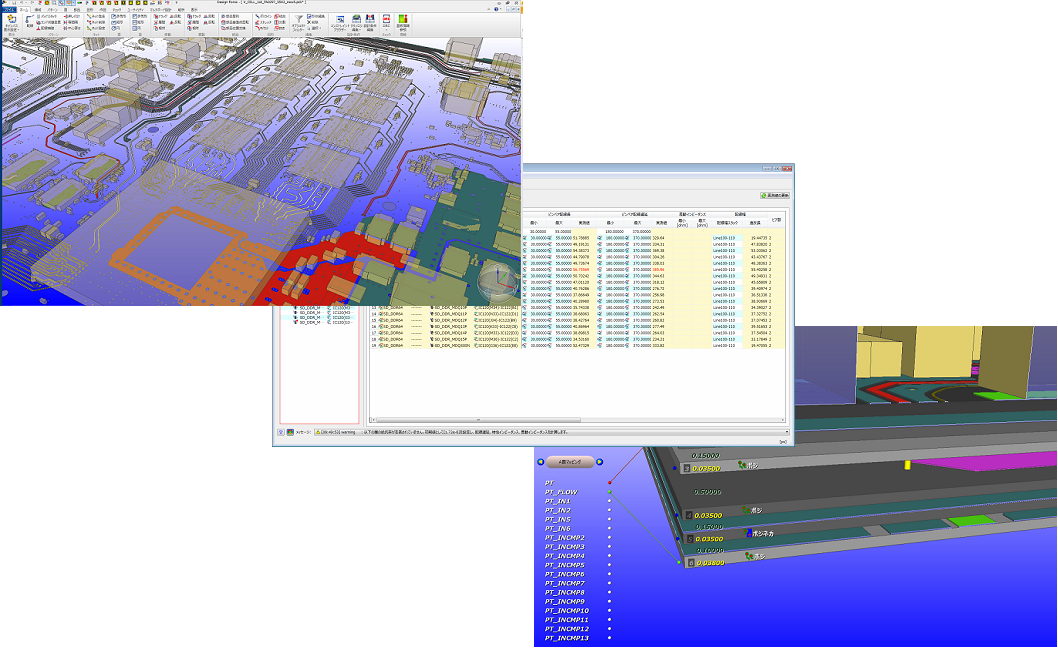
SI(Signal Integrity)
With the spread of high-speed interface, events such as signal quality deterioration due to delays and losses, unexpected crosstalk, and intermittent operation failures have become more common. By performing Full Wave analysis combining SPICE system simulators such as HSPICE (※1) / SIwave (※2) / HFSS (※3), etc. and electromagnetic field simulator from early design stages, we can predict problems in advance and determine the stack-up (layer configuration) and wiring route most suitable for high speed signal transmission to avoid problems. Signal integrity analysis using these high-precision, high-performance simulators improves the overall performance of systems operating at gigahertz (GHz) class frequency that are quite common in high-speed SerDes, SAS, DDR3, RF and other high frequency circuits.
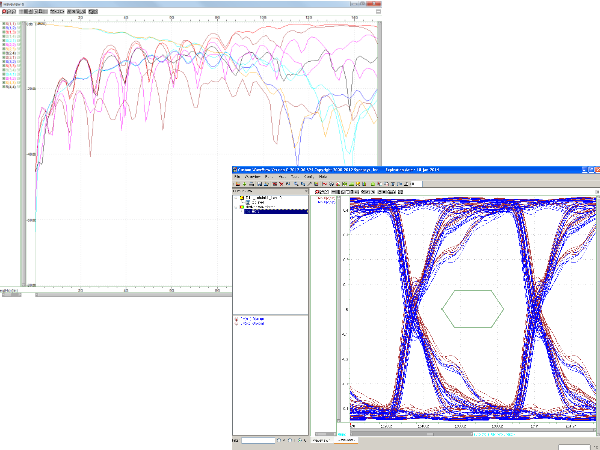
PI(Power Integrity)
The power supply system for high-speed CPUs and devices with high-speed interfaces must have low impedance over a broadband connection. We design a power route on PCBs where the electric current needed for device operations over not only DC but also the current harmonics of the operating frequency has been optimized. It quantitatively predicts the power supply decoupling which reduces the electromagnetic radiation source from cables, as well as the isolation which minimizes the propagation level to analog system and RF system due to power fluctuations in digital systems.
Perform IR drop analysis by SIwave and power supply transient analysis of the power supply by HSPICE,
◎Detect power supply problems at the early stages of design
◎Detect problems that are difficult to find in real machine evaluation
◎Perform What-if analysis and secure the most suitable power route
By performing power integrity analysis like this, we can reduce the number of times we need to create prototypes, and bring products with higher reliability to market in a shorter time.
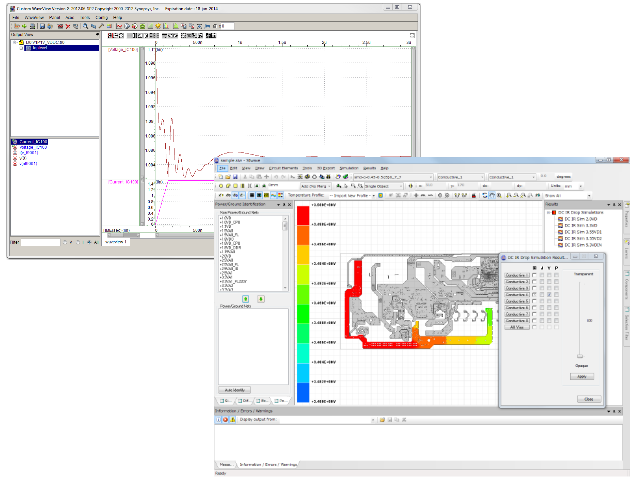
EMC(Electro-Magnetic Compatibility)
Because periodically changing high-frequency currents like the operating current of high-speed devices or the driving current of high-speed interfaces, etc. flow through the circuit board, they may affect board size, layout pattern, and cause unusual resonance phenomena. Such potential fluctuations may cause the radiation that comes directly from a large part or through a connected cable to not meet the required tolerance of the equipment. We plan to find antinodes of the standing wave, reduce the radiation amount by short-circuiting between the power supply and GND by the bypass capacitor and optimizing the parts screwed to the metal case.
With power plane resonance analysis, we can determine the optimal capacity and the position of frequency dependent decoupling capacitors. In addition, by performing plane resonance analysis of the entire surface of the printed circuit board by SIWave or HFSS, we can determine the optimal layout for the circuit board and chassis.
By performing “EMC design” which applies noise control from the upper processes of design like this, it is possible to eliminate retrogression when designing, and shorten the time taken for empirical measures.
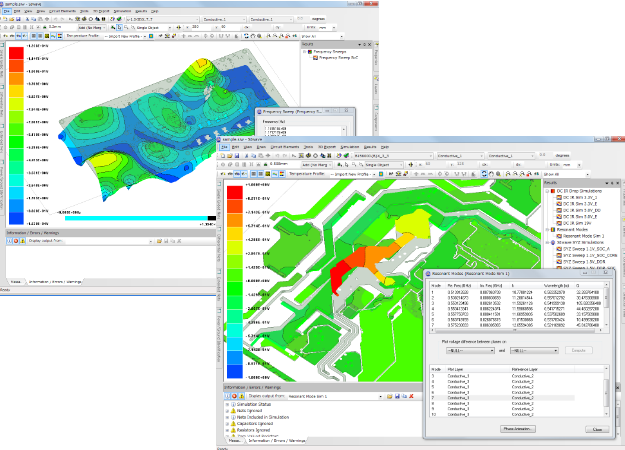
Thermal Fluid Analysis
Thermal problems in printed circuit boards, such as the increase of heat generation density due to the miniaturization of equipment or the increase in calorific value due to the rise in chip power consumption, are becoming more and more important.
Thermal fluid analysis software that can simulate 3 types of heat transfer (conduction, convection, radiation): Using Icepak※4, high precision analysis including Joule heat obtained from power supply analysis as well as thermal conductivity distribution of wiring patterns is performed from the early stages of PCB design.
As a result, it is possible to arrange components that are optimal for heat dissipation, and to design patterns that control calorific value. In addition, if there is an element of which calorific value is large compared to the calorific capacity of the printed circuit board, proposals of optimal heat sinks or fans, etc. are also possible. In products where top priority is given to securing heat dissipation, such as products with advanced device mounting where leakage current increases as chip temperature rises, it is recommended to apply the thermal design which is considered from the component placement stage.
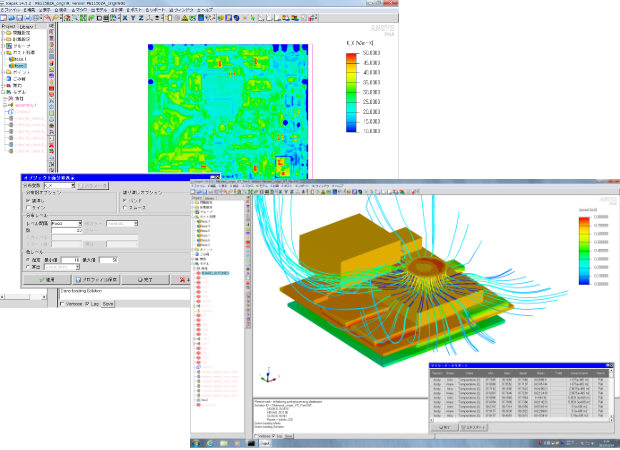
Information
NEXTY Electronics Corporation Invests in Ultimate Technologies Incorporated
